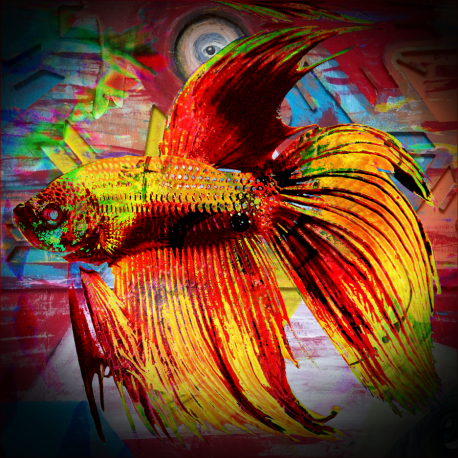More info
Datasheet
| Minimum Tank Size | 80 litres / 21.13 US gallons |
| Maximum Size | 8.5cm / 3.35inches |
| Temperature | 23°C / 73.40°F - 27°C / 80.60°F |
| Hardness | 0.00dgH / 0ppm - 5.04dgH / 90ppm |
| pH | 4.0-6.0 |
General Description
The Betta Renata belongs to the Betta waseri group/complex and exhibits a unique combination of physical characteristics, including a clay yellow base body coloration, iridescent gold opercle scales in mature males, and black markings on the throat. As a member of the labyrinth fish suborder Anabantoidei, it possesses a labyrinth organ, enabling it to breathe atmospheric air.
Aquarium Setup
The Betta Renata thrives in a fully-decorated aquarium environment, preferably without substrate for ease of maintenance. Decorate the tank with driftwood, roots, branches, clay plant pots, or piping to create shady spots and shelters. Adding dried leaf litter like beech or oak leaves can enhance the natural feel, provide shelter, and encourage microbe colonies for additional food sources. Dim lighting, Asian plant species, and floating vegetation are recommended. Gentle air-powered sponge filtration and a partially filled tank with a tight cover are essential for the fish's well-being.
Behaviour
Due to its disposition and requirements, the Betta Renata is best kept alone or with very peaceful species to prevent intimidation and competition. It can be housed in pairs or groups, displaying intriguing behavioral interactions among group members.
Feeding and Diet
In the wild, the Betta Renata feeds on insects and small invertebrates. In captivity, it readily consumes dried food but should be regularly offered live or frozen foods like Daphnia, Artemia, and bloodworms to maintain optimal color and condition. Small insects such as crickets or Drosophila fruit flies are suitable with caution not to overfeed and lead to obesity.
Reproduction & Dimorphism
Being a paternal mouthbrooder, the Betta Renata requires a separate breeding tank with meticulous care during courtship and spawning to ensure successful reproduction. Male specimens exhibit more vibrant colors, extended fins, and broader head shapes compared to females.
Habitat and Distribution
The Betta Renata is native to forest peat swamps and blackwater streams in Sumatra, Indonesia. These habitats are characterized by darkly stained water with minimal dissolved minerals, low pH levels, and abundant organic debris. The fish may need to survive in moist leaf litter for weeks due to fluctuating water availability.
Note: See table for specific water condition requirements.

